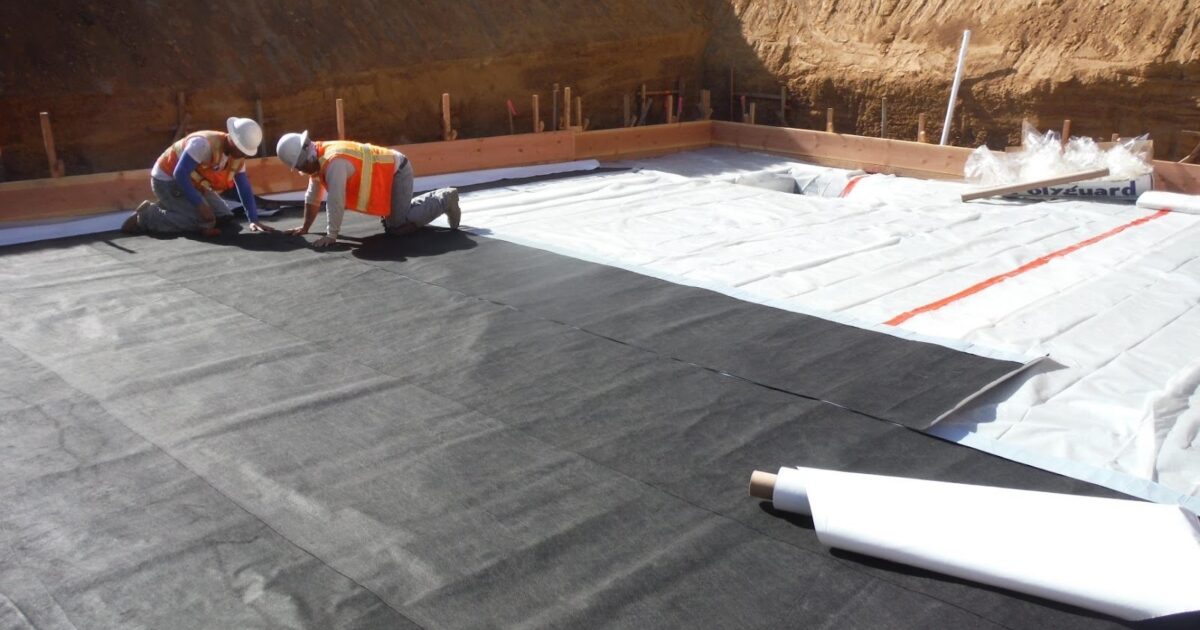When to Consider Sump pump installation & replacement Omaha: What Experts Say
Wiki Article
Kinds of Waterproofing: Checking Out the Numerous Techniques and Their Applications
Waterproofing is a vital facet of building and construction and upkeep. It shields structures from the detrimental effects of water damage. There are a number of methods offered, each with its unique applications and benefits. From membrane systems to cementitious remedies, comprehending these choices is necessary for reliable execution. The choice of waterproofing technique can substantially influence durability and durability. Exploring these different techniques exposes their distinctive advantages and potential difficulties, prompting additional factor to consider of suitable remedies.Membrane Waterproofing Equipments
Membrane layer waterproofing systems function as a critical obstacle versus water invasion in numerous frameworks. These systems normally contain slim sheets made from materials like rubber, thermoplastic, or asphalt, which are used to surfaces to avoid moisture infiltration. They can be mounted above or listed below quality and are especially reliable in locations prone to high water direct exposure, such as cellars, roofings, and foundations.The setup process entails cleaning up the substratum, applying adhesives or primers, and specifically fitting the membrane layer to assure total coverage. Membrane systems can be either fully adhered, mechanically affixed, or laid loose, depending on the details demands of the task. They use durability and adaptability, suiting architectural motions without jeopardizing their waterproofing abilities. These systems can be strengthened with extra layers for improved protection. Inevitably, membrane layer waterproofing systems are vital for protecting structures against water damages and keeping long-lasting stability.Liquid-Applied Waterproofing Coatings
Liquid-applied waterproofing finishings offer a functional option for securing surface areas from water seepage - Sump pump discharge drainage Omaha. These coverings are composed of liquid materials that, when applied, develop a seamless, versatile membrane. Their adaptability enables application on different substrates, consisting of concrete, metal, and timber. The finishes can be used in diverse environments, from domestic to industrial setups, making them ideal for roof coverings, structures, and below-grade structures.One considerable benefit of liquid-applied finishes is their capability to adhere to irregular forms and penetrate splits, producing a durable obstacle against dampness. They frequently show outstanding attachment buildings and resistance to UV radiation, ensuring durability and toughness. In addition, the application process is generally uncomplicated, enabling fast setup and minimized labor costs. This method likewise reduces the risk of water merging, as the continual layer successfully directs water far from prone areas. Generally, liquid-applied waterproofing coverings are an efficient option for detailed water defenseCementitious Waterproofing Solutions

Cementitious waterproofing solutions provide a robust choice for structures requiring click trusted moisture protection. These systems primarily use a mix of cement, sand, and chemical additives to produce a waterproof barrier. They are commonly applied to surfaces such as concrete wall surfaces, structures, and floorings, offering a long lasting, long-lasting defense versus water intrusion.One of the vital advantages of cementitious waterproofing is its convenience of application; it can be applied utilizing a brush, roller, or spray, making it appropriate for numerous job sizes. Furthermore, this technique is suitable with several surface areas and can often be used together with other waterproofing techniques.Cementitious remedies are particularly efficient in settings where water direct exposure is a problem, such as basements or below-grade frameworks. Their exceptional attachment properties ensure that they bond well with substrates, offering a solid and nonporous layer versus wetness infiltration.
Bentonite Waterproofing
Bentonite waterproofing is a very efficient technique that utilizes sodium bentonite clay to produce an all-natural barrier against water. This strategy exploits the distinct properties of bentonite, which expands upon call with water, securing any possible leakages and protecting against dampness infiltration. It is frequently used in various applications, including structure walls, passages, and retaining walls, where water resistance is essential.Bentonite can be used in a number of forms, such as panels or coverings, supplying adaptability in installment. Its ability to self-seal makes it an appealing option for locations based on shifting soil or rising and falling water degrees. Furthermore, bentonite waterproofing is eco-friendly, as it is a natural product that does not present dangerous chemicals into the surroundings.Drainage and Exterior Waterproofing Systems
Efficient waterproofing commonly involves a mix of methods, consisting of drain and outside systems. Drainage systems, such as French drains and sump pumps, are made to reroute water far from structures, minimizing hydrostatic stress against foundations. These systems are essential in stopping water build-up that can bring about architectural damages and mold growth.External waterproofing, on the various other hand, includes applying safety obstacles to the structure's exterior. Methods such as the setup of water-proof membrane layers, coatings, or sealants can aid protect against water infiltration. This technique not only protects the structure yet also enhances the overall durability of the structure.Together, drainage and outside waterproofing systems form a thorough service to manage water successfully. By implementing these strategies, building owners can guard their investments versus the damaging results of dampness, guaranteeing lasting stability and safety and security for their buildings.Regularly Asked Concerns
Exactly how Do I Choose the Right Waterproofing Technique for My Project?
Choosing the right waterproofing method depends on elements such as project type, environmental conditions, budget, and desired long life. Evaluating these facets enables for educated decisions customized to particular needs and needs.
Can Waterproofing Be Applied in Cold Climate Issues?
Waterproofing can be applied in cool weather condition problems, however it calls for certain products and techniques. Cold temperatures may influence healing times and attachment, demanding careful option of items created for click here for info low-temperature application.
What Are the Typical Indicators of Waterproofing Failure?
Usual indicators of waterproofing failure consist of visible water stains, peeling visit homepage paint, wet odors, mold and mildew development, and splits in wall surfaces or foundations. Landscape drainage Omaha. These indications suggest that dampness is permeating the obstacle, compromising its efficiencyFor How Long Does Waterproofing Last Prior To Needing Maintenance?
The durability of waterproofing varies, commonly lasting in between 5 to 10 years. Factors such as material quality, environmental conditions, and maintenance methods influence its toughness, requiring regular inspections to ensure effective security versus water breach.Are There Eco-Friendly Waterproofing Options Available?
The inquiry of eco-friendly waterproofing alternatives reveals a growing rate of interest in lasting products (Basement waterproofing Omaha). Numerous all-natural materials, such as plant-based sealants and recycled items, supply reliable services while lessening ecological impact, attracting eco mindful consumersReport this wiki page